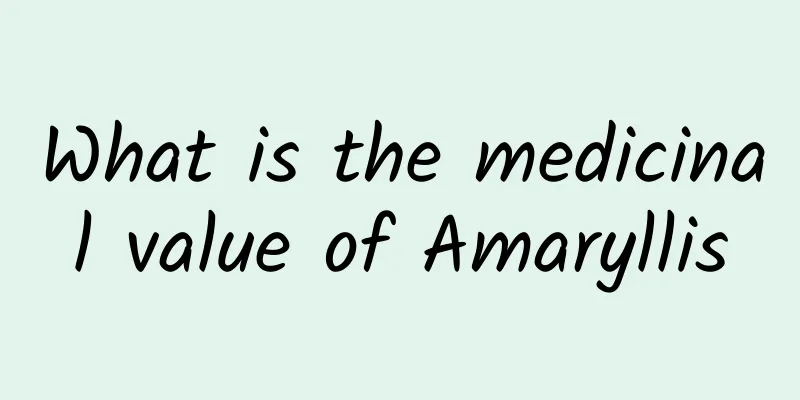The efficacy and function of Buddleja

|
Speaking of Buddleja buddhistiensis, I believe many friends know it, because it has a good effect in treating diseases. However, some friends do not know the specific effects of Buddleja officinalis, so let’s take a detailed look at the effects of Buddleja officinalis here. 【English name】 FLOS BUDDLEJAE [Other names] Menghua, Menghuazhu, Lao Menghua, Sheep's Ear Duojian, Water Brocade Flower, Yellow Buddleija [Source] This product is the dried flower buds and inflorescences of Buddleja officinalis Maxim., a plant of the Loganaceae family. Harvest in spring before the flowers open, remove impurities and dry. [Properties] This product is mostly small inflorescence branches with densely clustered buds, irregular cone shape, 1.5 to 3 cm long. The surface is grayish yellow or brownish yellow and densely covered with hairs. The flower buds are short rod-shaped, slightly larger at the top, 0.3-1 cm long and 0.1-0.2 cm in diameter; the calyx is bell-shaped, with 4 lobes at the tip; the corolla is tubular, the same length as the calyx or slightly longer, with 4 lobes at the tip, and the lobes are ovate; there are 4 stamens, attached to the middle of the corolla tube. Soft texture. It has a slight fragrance and tastes slightly bitter and spicy. [Identification] Surface observation of the calyx and corolla of this product: the lower surface is densely covered with non-glandular hairs, usually 4 cells, 2 cells at the base are single-row; the upper 2 cells are parallel, each cell is divided into 2 forks, each fork is 250-500μm long, with very thick walls and linear cell cavity. There are a few non-glandular hairs on the upper surface of the corolla, which are single-celled, 200-600 μm long, and have numerous thorn-like protrusions on the wall. Pollen grains are spherical, 13 to 20 μm in diameter, with a smooth surface and three germination pores. 【Nature and flavor】 Sweet, slightly cold. 【return through meridians】 Return to the Liver meridian. 【Functions and indications】 Clears away heat and nourishes the liver, improves eyesight and removes cataracts. It is used for red, swollen and painful eyes, excessive tearing and photophobia, opacities on the eyes, dark eyes due to liver deficiency, and blurred vision. 【Usage and Dosage】 3~9g. 【Storage】Place in ventilated and dry place, away from moisture. [Remarks] (1) For symptoms such as red, swollen and painful eyes, excessive tearing, photophobia and pannus, it is often used in combination with chrysanthemum, cassia seed and horsetail herb. 【Excerpt】 Chinese Pharmacopoeia [Source] Kaibao Materia Medica The above is a detailed introduction to the effects and functions of Buddleja buddleja. Its selection should be based on your own needs, so that it will not harm your body and can achieve a good effect in improving the disease. |
<<: The efficacy and function of rice shreds
>>: The efficacy and function of dense-spiked brick seedlings
Recommend
Is it not good to walk more than 10,000 steps a day? How many steps should we walk?
Many people shake their phones when they sit down...
The efficacy and function of lingcao
Poria cocos is a traditional Chinese medicine wit...
"Zero Additive" is prohibited! The new national food safety standard is here, what does it mean to us?
Recently, the National Health Commission and the ...
The efficacy and eating methods of Panax notoginseng powder
A healthy body is inseparable from good maintenan...
What are the effects and functions of coltsfoot flowers
In our daily life, we mainly use coltsfoot as a m...
The flood season has arrived! There may be a "big pit" under the calm water surface. What should you do if you accidentally drown?
Recently, a couple in Yuncheng City, Shanxi Provi...
A positive case in Zhengzhou tested negative for nucleic acid for 12 consecutive times. How many nucleic acid tests should be conducted to ensure peace of mind?
Recently, a positive case in Zhengzhou tested neg...
How far have scientists come in creating temperatures close to absolute zero on Earth?
Before going out every day, I habitually check th...
What are the medicinal effects of the fruit of the stone tiger?
If many people have not heard of Shihu, then you ...
Will the “Snow Country” come?
On March 20, 2023, the last assessment product of...
What is the US military's ABIS that fell into the hands of the Taliban? This article will help you understand the pros and cons of biometric technology
What kind of high-tech is the US military's A...
Can you eat the peel of fruits? These kinds of fruits are not only edible, but also very nutritious!
It's the hot summer season, and it's time...
China Payment and Clearing Association: 2022 China Payment Industry Annual Report
From the perspective of payment market players, a...
What are the effects and uses of Chinese medicine Maca?
Maca is now also used by many people as a kind of...
The efficacy and function of small five-color Su
Small five-colored Su is a medicinal material. If...









